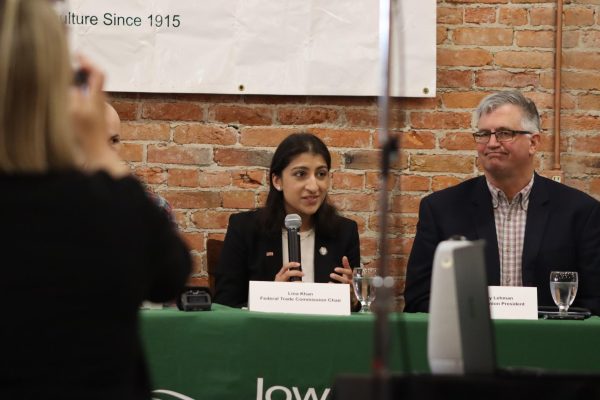Market drives salary allocation
March 6, 2012
The ISU athletic department employs four out of the five top paid individuals at Iowa State.
In order, the top paid individuals at Iowa State in 2011 were Paul Rhoads, Fred Hoiberg, Bill Fennelly, Gregory Geoffroy and Jamie Pollard, according to the Des Moines Register’s State Salaries database.
Further, the ISU athletic department employs six out of the top 10 paid employees at Iowa State.
While some might see the discrepancy between individuals represented in this list as a reflection upon where the values of Iowa State lay, the difference has little to do with the importance of each to the university and more to do with demand.
“Salaries are driven by market,” said Brenda Behling, assistant to the executive vice president and provost. “There is a much different market for coaches than there is for, let’s say, English professors. It is hard to compare the two.”
Steve Malchow, senior associate athletic director, explained that while coaching salaries are a significant part of the athletic department’s budget, “that is a market-driven element.”
At Iowa State, there are distinctly different budgets for academics versus athletics. The education budget, which is funded by the state legislature and student tuition, provides for “institutional and academic support” while the athletics budget, not funded by the state legislature or student tuition dollars, provides salaries for individuals within the athletics department. These salaries are taken from an entirely different budget, Behling said.
“The general fund — that is, moneys we get appropriated from the state legislature and also tuition revenue — is supporting all of your salaries that have to do with providing education to the students,” Behling said.
“On the coaches side, there is a separate budget for athletics, which is not funded by state dollars,” she said. “As you hear people talking about the athletic salaries, it is always important to note that those are not tax dollars, they are not student tuition dollars [and so on].”
The salaries for coaches and individuals within different sports in the ISU athletic department are paid for with “pooled revenues” that support their “pooled expenses.”
“Our total athletics department budget [per Equity in Athletics Data Analysis] for the most recent years is $48.6 million,” Malchow said. “That is the lowest budget in the Big 12 Conference. It is with that amount of financing that we operate our department.”
Malchow said, “The most significant areas of revenue generation are ticket sales [at] 26 percent, conference and NCAA revenues [at] 35 percent, fundraising [at] 18 percent, multimedia rights [at] 7 percent and other [at] 14 percent.”
It is from these revenues that each salary within the athletic department is funded.
Within each of the two divisions, academics and athletics, the breakdown of how salaries are determined goes even further. Differences in salaries among faculty members — for example, professors and new faculty hires — are driven purely by market, based on the different disciplinary focuses.
“The market certainly determines how much we pay for a professor of English verses a professor in finance or accounting,” Behling said. “Those salaries are very different. The average starting salary for an assistant financing professor for a nine-month pay period is $130,000, while the average starting salary for an assistant English professor is $55,000.”
Also, Behling said when the university is looking to hire a professor for the College of Business, it is competing against other universities looking to hire the best candidate.
Currently, when comparing the average salary for instructional faculty, Iowa State is ranked ninth out of the 11 universities in its “peer group.” These schools include Illinois, Ohio, Cal-Davis, Minnesota, Purdue, Michigan State, Texas A&M and Wisconsin.
Eight of the schools in Iowa State’s peer group have an average associate professor salary higher than Iowa State’s.
“That is not something we are proud of,” Behling said. “If we are not competitive, we are probably not able to hire our No. 1 candidate. We might get No. 2 or No. 3. We want to hire the best faculty. At Iowa State, we want to make sure we are competitive.”
Just like Iowa State’s academic departments, the athletic department seeks to bring in the best hire for the open positions. For each of these new hires, there is a negotiation phase between the coach’s representation and the athletic director, and the president is usually included in any major hire. In the end, the market heavily influences the resulting agreement for individuals in those positions, Malchow said.
“If you think about it, the head basketball coach and head football coach are going to be the most visible figures involved with the university,” said Levi Stevenson, junior in construction engineering. “[Rhoads] is bringing the university more publicity than we have ever had. We are as visible now as we have ever been, and I have no problem paying him as much as we are.”
In 2011, Rhoads’ salary was $1,099,999.96, Hoiberg made $808,333.34, Fennelly earned $535,000.00, Geoffroy was paid $423,316.00 and Pollard made $378,560.00.
















